Template letter to the editor
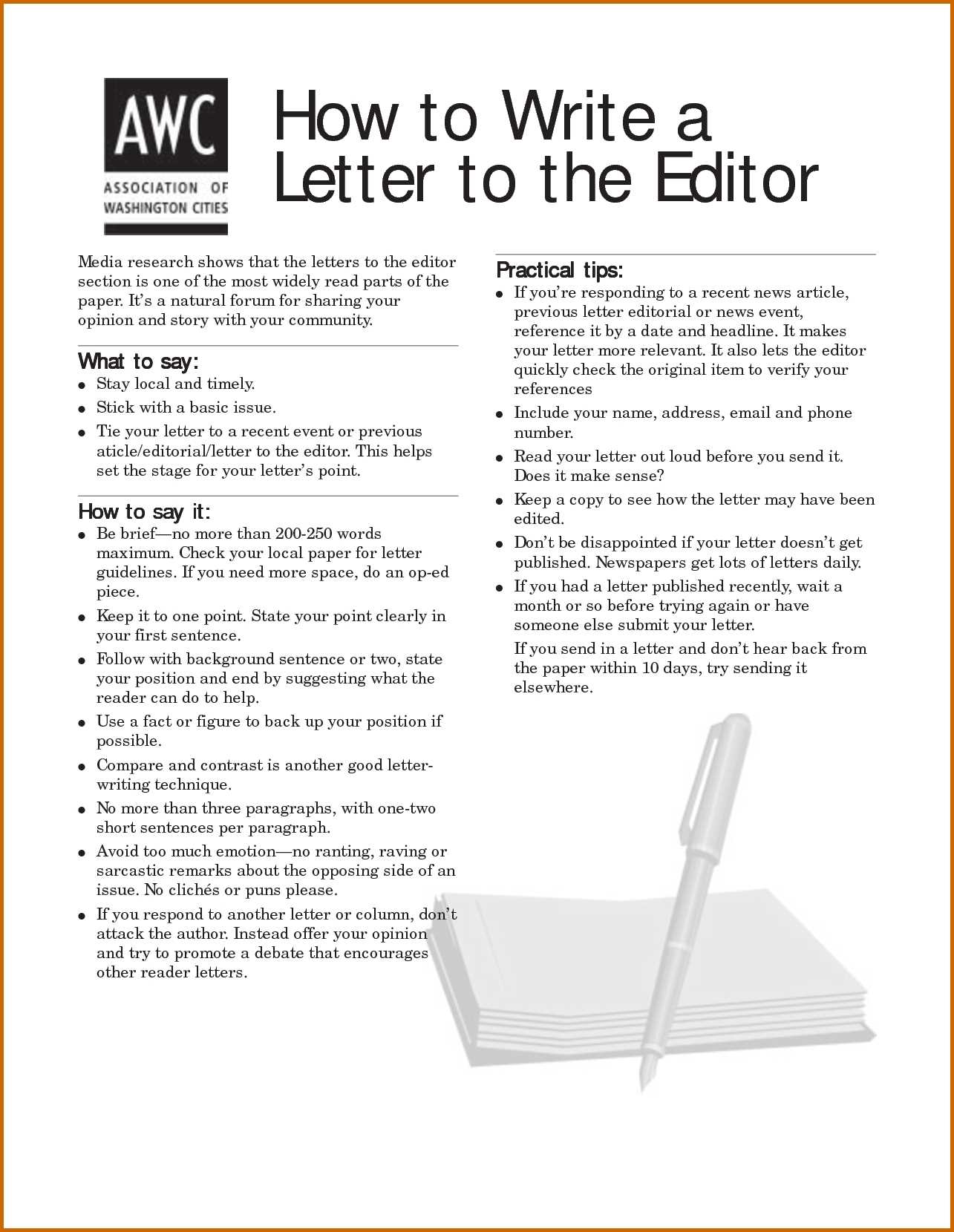
When writing a letter to the editor, it’s crucial to remain clear and direct. Start with a strong opening statement that addresses the issue or topic at hand. Avoid unnecessary preambles and get straight to the point.
Use a concise tone, backing up your position with clear facts or personal experience. Ensure your arguments are well-structured, with each paragraph supporting your main point. If you’re responding to a specific article, mention it directly and explain why you agree or disagree.
Conclude with a call to action or a thought-provoking statement. This is your opportunity to encourage further discussion or urge readers to consider a different perspective. Make sure the closing is just as direct and impactful as the opening.
Template Letter to the Editor: A Practical Guide
Use a clear and direct approach when drafting a letter to the editor. Address the issue at hand with concise language. Begin with a brief statement of purpose, indicating your intention to respond to a specific article or topic.
Structure Your Letter Effectively
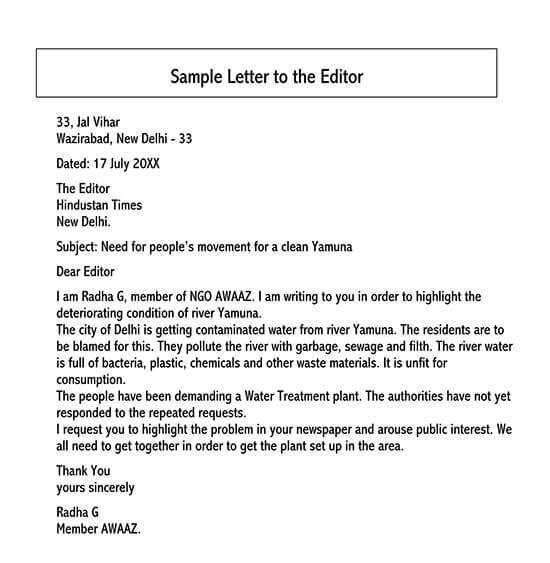
Start with a formal greeting, such as “Dear Editor” or “To the Editor.” Then, immediately reference the article or issue you are responding to, mentioning the title and date of publication. This ensures the editor knows exactly which piece you are commenting on.
In the body of the letter, express your views clearly and support your argument with specific points or examples. Avoid vague language; your opinion should be backed by concrete details. For instance, if you disagree with a point, explain why and offer your perspective with solid reasoning. Keep your tone respectful, even if the subject matter is controversial.
Be Concise and to the Point
Limit your letter to one or two paragraphs that clearly outline your thoughts. Editors are often busy, so brevity is key. Focus on one main issue and stay on topic throughout your letter. If necessary, you can include additional points, but only if they directly contribute to your argument.
End with a strong closing. Thank the editor for considering your perspective, and offer a polite sign-off, such as “Sincerely” or “Best regards.”
Finally, make sure your contact information is included. Editors may need to follow up with you for clarification or verification of details.
Choosing the Right Tone for Your Letter
Select a tone that reflects the purpose of your letter and the relationship you have with the recipient. If your goal is to express concern, keep the tone respectful and composed. A casual tone may work if you have a friendly relationship with the editor, but avoid being overly informal, as it can undermine the seriousness of your message.
Maintain Clarity and Respect
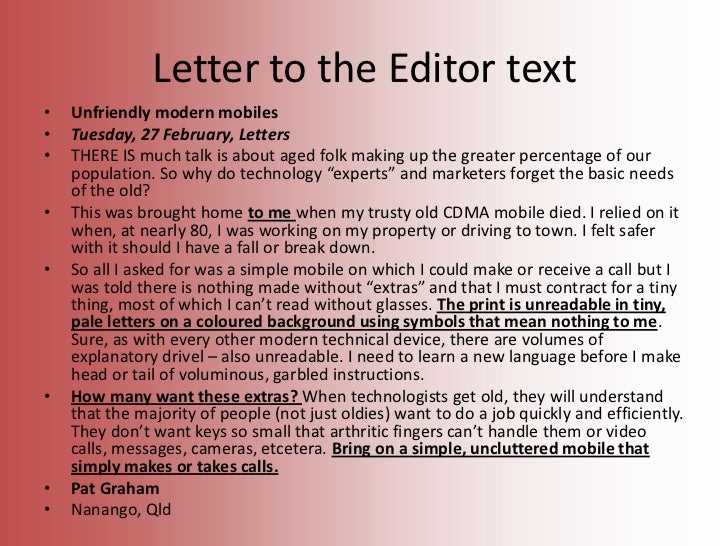
Use a tone that maintains clarity and respect. This means avoiding language that could be perceived as confrontational or dismissive. While it is fine to disagree with a published opinion, ensure that your wording conveys your point without attacking the writer or the publication. Focus on facts, provide evidence, and be constructive in your approach.
Adjust for Your Audience
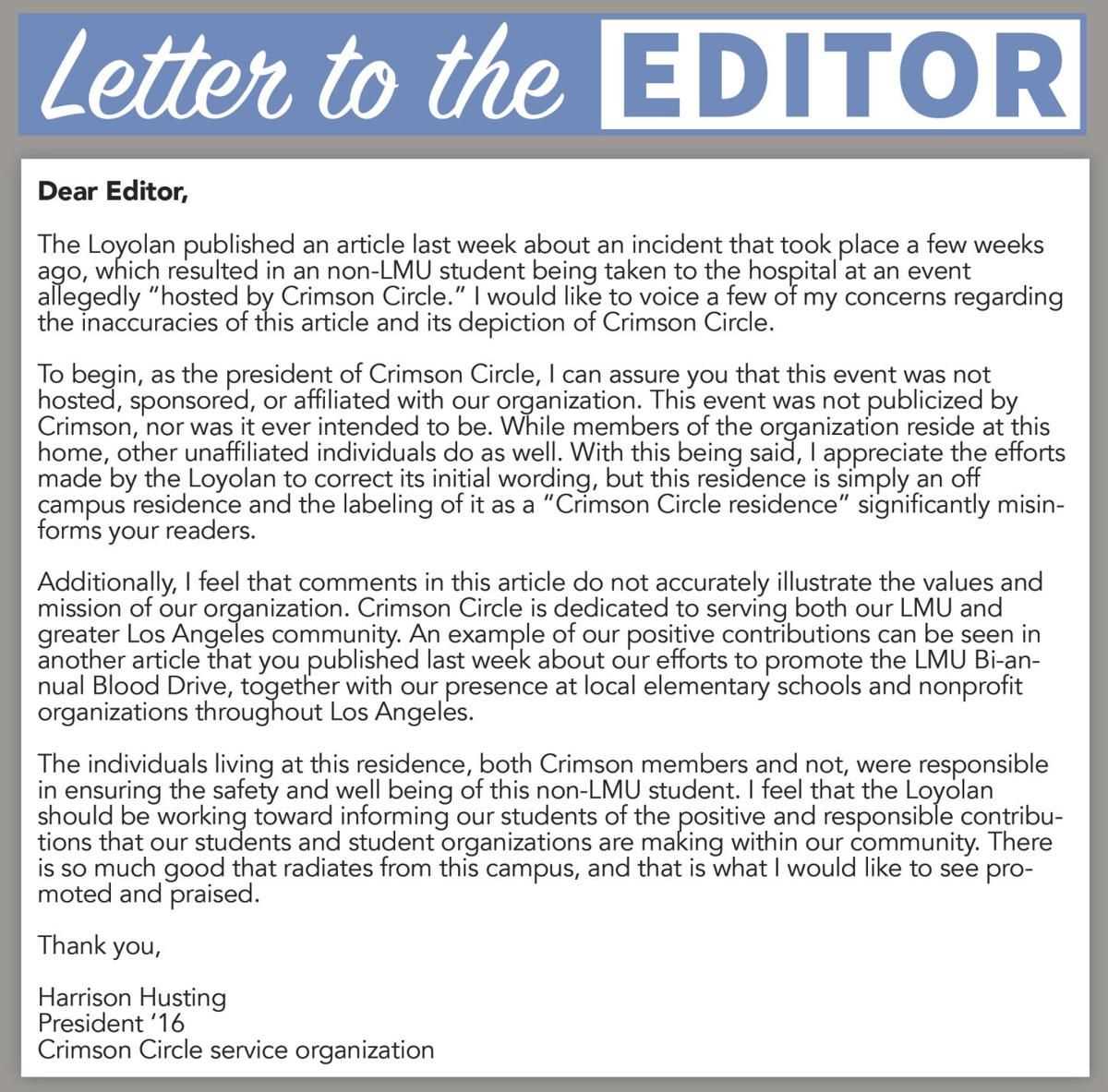
If you’re addressing a publication with a formal tone, it’s best to mirror that style in your letter. Conversely, if the publication is more conversational or lighthearted, you can match that tone, but stay mindful of your message’s integrity. The goal is to communicate effectively without alienating or overloading the reader.
Crafting a Clear and Concise Subject Line
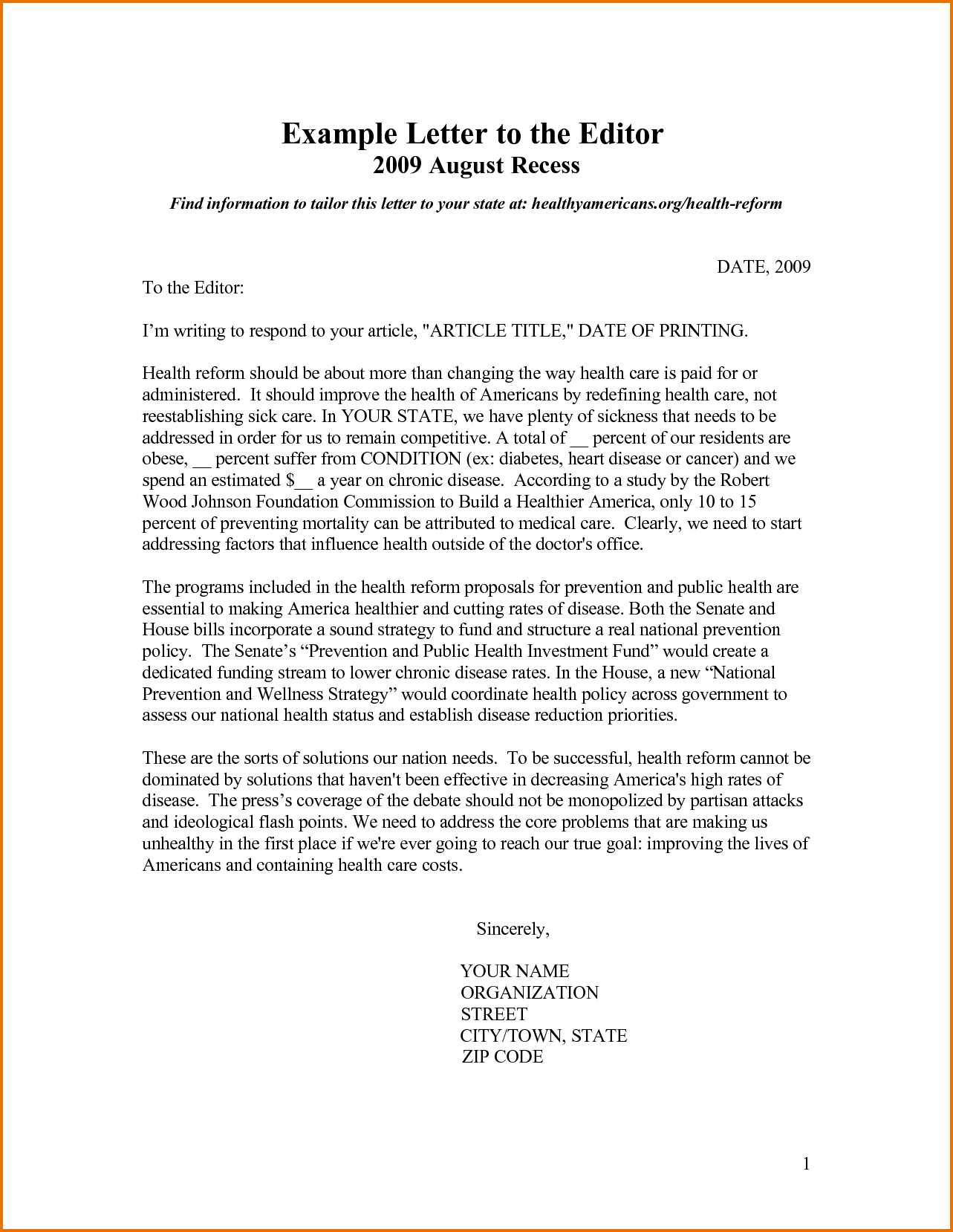
Keep the subject line direct and to the point. Use keywords that immediately convey the purpose of your letter. Avoid vague terms and focus on what the recipient will gain or understand from your message. For example, “Request for Clarification on Policy Change” is much clearer than “Questions Regarding Recent Update.”
Avoid using unnecessary words that don’t add value to the message. Each word should serve a clear function. If the subject is too long, trim it down to capture only the most critical information. Shorter subject lines are easier to read and more likely to get attention.
Make it specific. Instead of generic subjects like “Important Issue” or “Feedback Request,” specify what the issue is or what feedback is being asked for. For instance, “Feedback Request on Marketing Strategy Proposal” is more precise and gives the reader a clear idea of what to expect.
Use action words that prompt the reader to engage with your letter. Phrases like “Request,” “Inquiry,” or “Response Needed” convey urgency or action. This can help the recipient prioritize your message among others.
Lastly, avoid using excessive punctuation marks or capital letters, as they can appear unprofessional and make your message seem less serious. A straightforward, well-structured subject line will always stand out more effectively.
Presenting Your Argument with Supporting Evidence
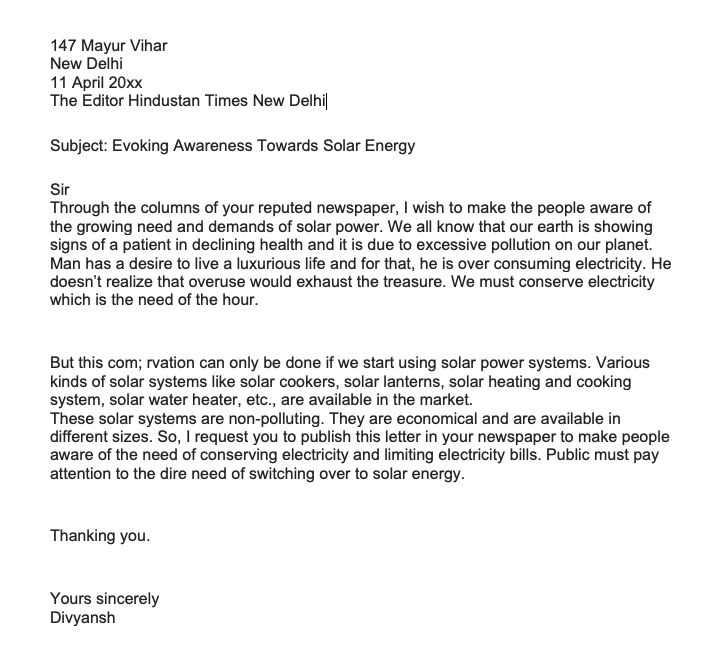
Present your argument with solid evidence that directly backs up your claims. Ensure the evidence is relevant and strengthens your position without overwhelming the reader. Use facts, statistics, studies, or expert opinions to make your case credible.
When selecting evidence, focus on its clarity and reliability. Avoid using data that might be questioned or lacks a clear source. Include examples that are directly related to your argument. This connection will show the reader why your evidence is valuable.
| Type of Evidence | How it Supports Your Argument |
|---|---|
| Statistical Data | Provides measurable facts that prove trends or patterns. |
| Expert Opinion | Shows that recognized authorities in the field agree with your perspective. |
| Case Studies | Illustrates real-life applications and results that support your argument. |
| Historical Examples | Shows that your argument aligns with past events or outcomes. |
Link each piece of evidence to a specific point in your argument. This helps the reader understand how each fact supports your reasoning. Avoid presenting evidence without explanation, as it can confuse or disengage the reader.
Lastly, keep your evidence concise. Too much data can distract from your main point. Focus on the most compelling facts that make your argument undeniable.
Addressing the Editorial Team and Maintaining Professionalism
Begin with a clear and respectful salutation. Address the editorial team directly, using titles such as “Dear Editors” or “Dear Editorial Team,” ensuring a formal tone. Avoid overly casual greetings, which may undermine the seriousness of your message.
Maintain clarity in your language. Stay concise while expressing your concerns, feedback, or suggestions. Keep sentences direct, avoiding unnecessary elaboration that could distract from your main point. Respect the time of the readers by staying on topic and focusing on the core message.
Be polite yet assertive. While it’s important to be firm about your views, ensure that your words are courteous. For instance, use phrases like “I would appreciate your consideration of this matter” instead of demanding action. Acknowledge the editorial team’s work before offering suggestions or critiques.
Always maintain an objective and respectful tone, even when addressing potential disagreements. Avoid inflammatory or overly emotional language, as this could diminish the strength of your argument. Acknowledge any strengths in the publication alongside any points you wish to raise.
Lastly, sign off professionally. Use a closing such as “Sincerely” or “Best regards” followed by your name. This signals both respect and professionalism, ensuring that your correspondence leaves a positive impression.
Personalizing Your Letter to Capture Attention
Tailor your letter to directly address the editor’s interests or the publication’s focus. Start by referencing a recent article or issue related to your topic. This immediately shows that you are engaged and aware of their content.
Use Specific Examples
Instead of making broad statements, include specific examples that support your viewpoint. For example, if you are writing about a local issue, mention how it directly affects the community. This helps ground your argument and makes it relatable.
Avoid Generic Phrases
Editors receive many letters. Avoid using generic phrases like “I have been a long-time reader” or “I am writing to express my concern.” These phrases lack originality. Instead, focus on the issue at hand and explain why it matters to you personally or to your community.
- Address the editor by name, if possible, for a personal touch.
- Make sure your tone is respectful but assertive, and stay focused on the issue you are discussing.
- End with a clear request or action you’d like the editor or the publication to consider.
By focusing on the specifics of the situation and connecting your message to the publication’s focus, you increase your chances of standing out and being heard.
Following Up on Your Submission and Handling Responses
After sending your letter to the editor, wait a reasonable period of time before following up. Typically, this could be one to two weeks, depending on the publication’s response times. Be polite and concise in your follow-up message. Begin by confirming that your letter was received, and ask if there’s any additional information they need to process it.
How to Follow Up Effectively
- Ensure your follow-up is courteous, without demanding immediate attention.
- Keep your message brief, clearly stating your inquiry regarding the status of your submission.
- Consider offering to resubmit your letter in case it was misplaced or overlooked.
Handling Responses
When you receive a response, whether positive or negative, respond with professionalism. If your letter is published, thank the editor for the opportunity and express your appreciation. If not, respectfully inquire about the reason for the rejection. Editors may provide feedback or offer advice for future submissions.
- For a positive response: Acknowledge the editor’s efforts and show gratitude.
- For a rejection: Be open to constructive feedback and adjust your submission accordingly for future attempts.